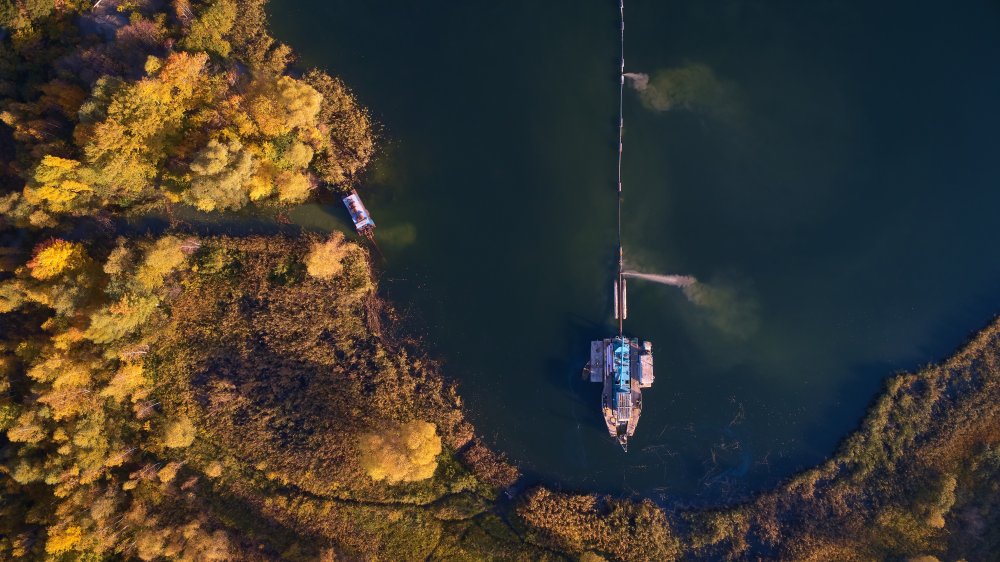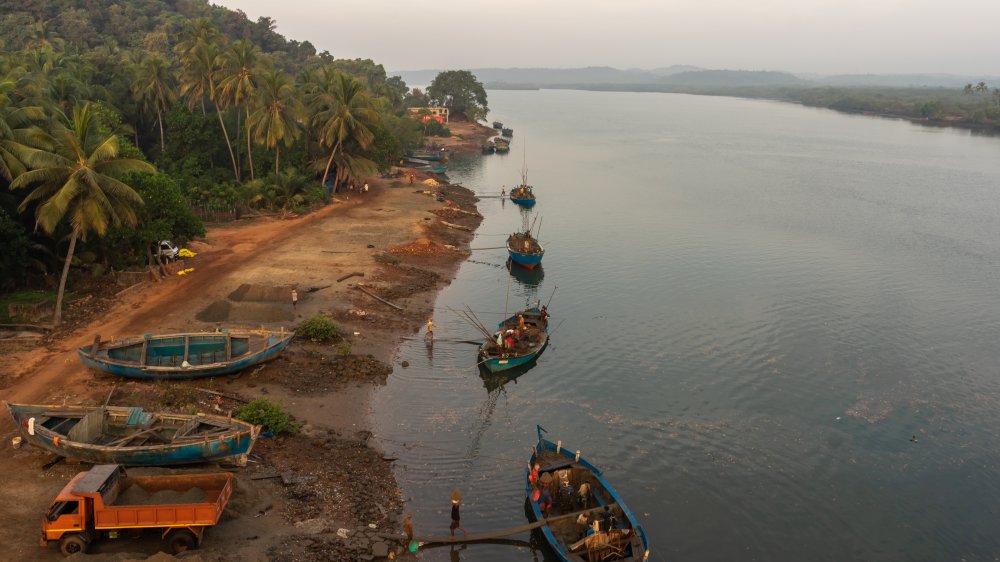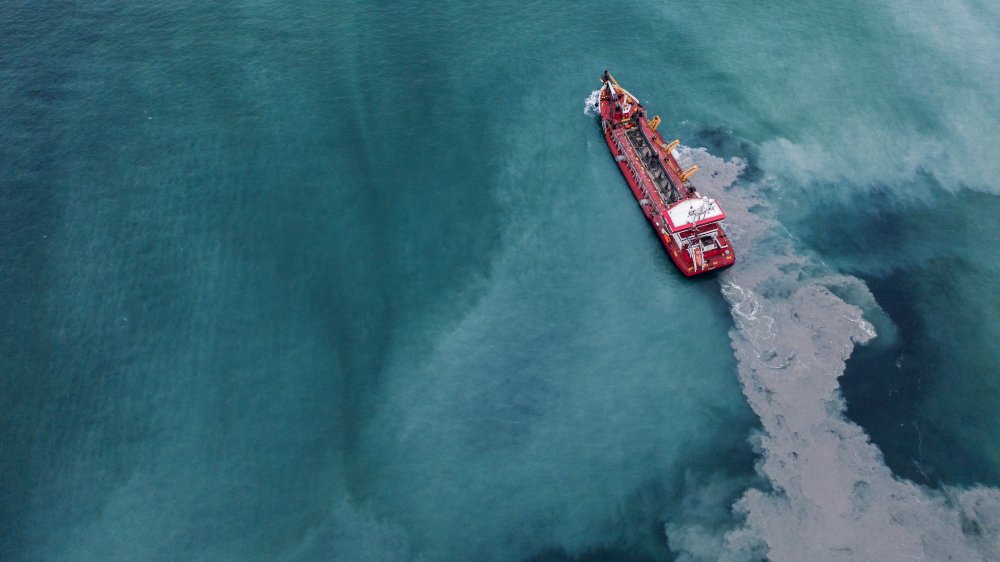The Crazy Real-Life Story Of Sand Mafias
"And so castles made of sand fall in the sea, eventually," sang Jimi Hendrix. And when you think about how much of modern civilization depends on sand, this simple adage takes on a more foreboding significance. As the BBC reported in 2019, sand is the second-most-consumed product on the planet, surpassed only by water. It's in our buildings, in the concrete of the walls and the glass of the windows. It's in our cars, our computer screens, our cell phones, and the silicon microchips that keep information humming through all of them. If we run out of sand, we run out of what we need to continue living life as we know it.
Thankfully, the world is covered in sand, so we're good, right? As irony would have it, no. As crazy as it sounds, the world is actually running out of the type of sand we need to make all of these products that allow us to have the quality of life we currently enjoy. (Isn't the Earth even more bizarre than you thought?) Each year humans consume around 50 billion tonnes of sand (that's metric tons, which come out to a little more than a tenth larger than U.S. tons) to carry out the oh-so-important work of being humans. Sooner or later, even a resource is as plentiful as sand is going to run out. That day is coming sooner than you'd think, and there are people who are taking advantage of that fact.
Sand is the focus of organized crime all across the globe
"They call them the sand mafia," journalist Vince Beiser told Australia's ABC News in January 2020. He was talking about the organized crime that has grown around the sand industry in India, where "[t]hey have literally murdered hundreds of people," including journalists, police officers, government officials, and environmental activists. According to The Guardian, a journalist investigating illegal sand mining in northern India was burned to death in June 2015. "Another one was hacked to death with machetes," said Beiser. And it's not just in India. Similar murders have been reported in South Africa, Gambia, Kenya, Indonesia, and Mexico. "It's a worldwide phenomenon," he said.
Aunshul Rege, a criminal justice professor at Temple University, told the Philly Voice in 2018 that there simply isn't enough legal sand to go around. "There are construction companies with permits to excavate sand, but they are subjected to specific quotas, they need to pay royalties or tariffs on what they mine," he said, "and so the supply, the legally available supply, is far less than what is needed."
And the threat extends beyond the environmentalists, journalists, and others trying to curb the black market for sand. The scarcity and cost of quality sand allow for adulterated sand, which is less safe, to make into construction supplies. "This is very scary because you're building high-rises with adulterated sand that is no longer strong, and this could cause building collapses," said Rege.
The environmental costs of the sand mafia
"The issue of sand comes as a surprise to many, but it shouldn't," Pascal Peduzzi, a researcher with the United Nations Environment Program, told the BBC. "We cannot extract 50 billion tonnes per year of any material without leading to massive impacts on the planet and thus on people's lives."
Developers can't just use any old desert sand to build with. The usable sand comes from the bottoms of rivers, lakes, and oceans, as well as beaches. But taking sand from where nature put it inevitably causes the natural processes that put it there to change. It can cause rivers to flow much faster, causing more flooding, landslides, and other natural disasters. "If you keep mining [riverbeds] for a long period of time you're going to change the geography of an area," said Dr. Rege.
Sand mining has caused the slow disappearance of the Mekong River Delta in Vietnam. Coral reefs in Florida, Kenya, and the Persian Gulf have been damaged as a result of ocean dredging. Fish, shorebirds, and other ocean wildlife have seen their habitats annihilated. Since such crimes are harder to track and are punished less severely than other illegal activities, such as human or drug trafficking, sand mafias continue operate with near impunity all over the world. And with the UN predicting that another 2.5 billion people will flock to urban areas over the next three decades, the demand for sand appears set to only increase in the future.


